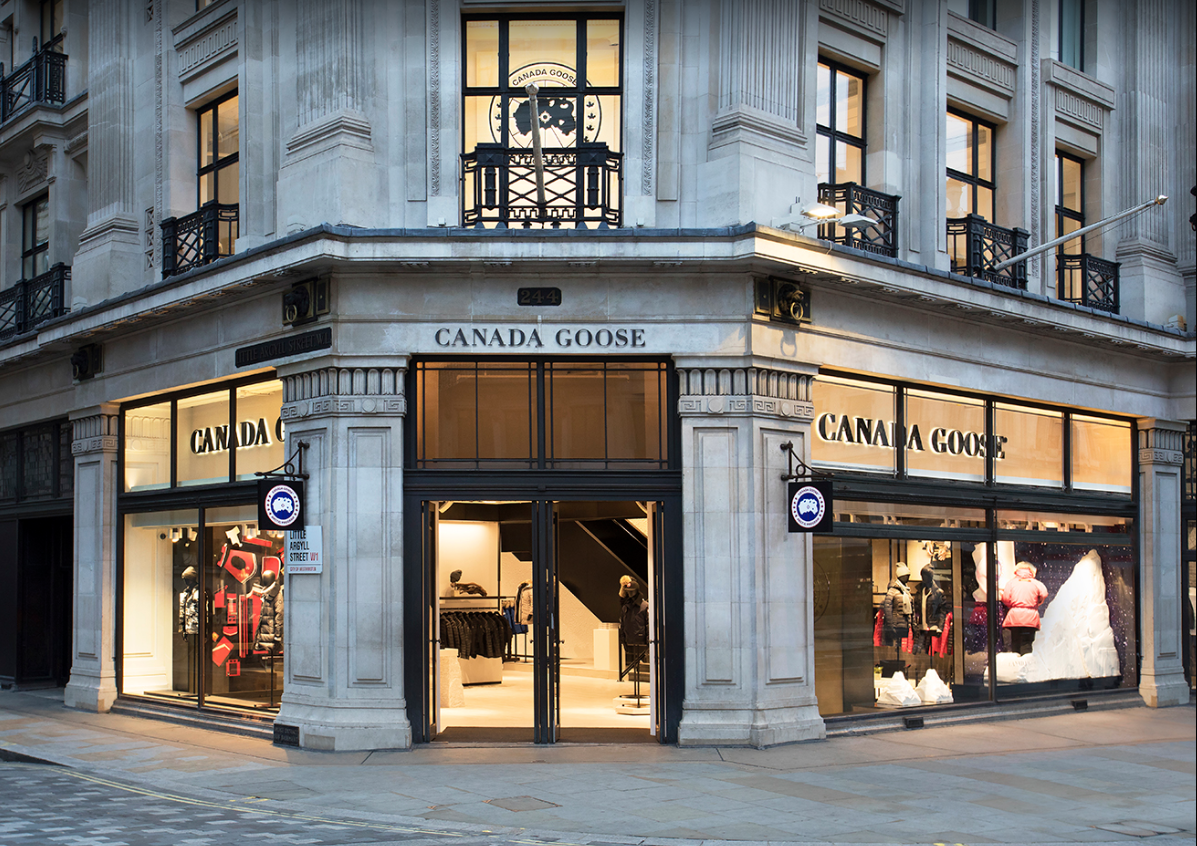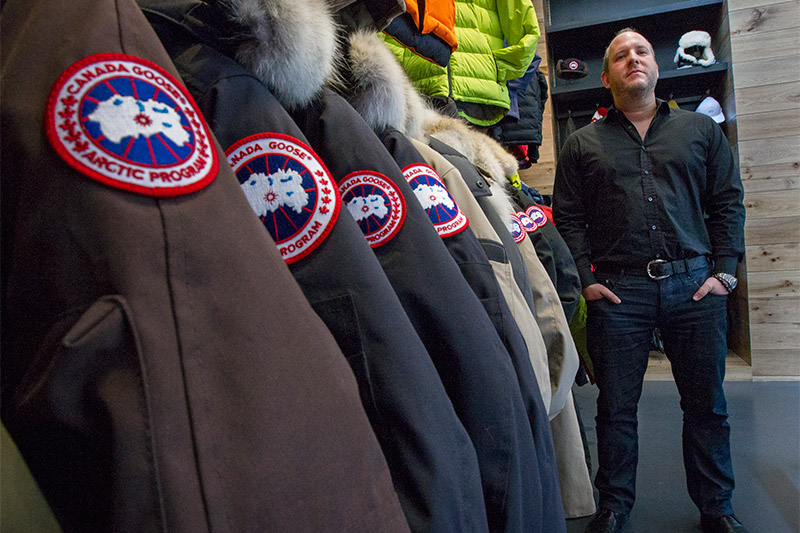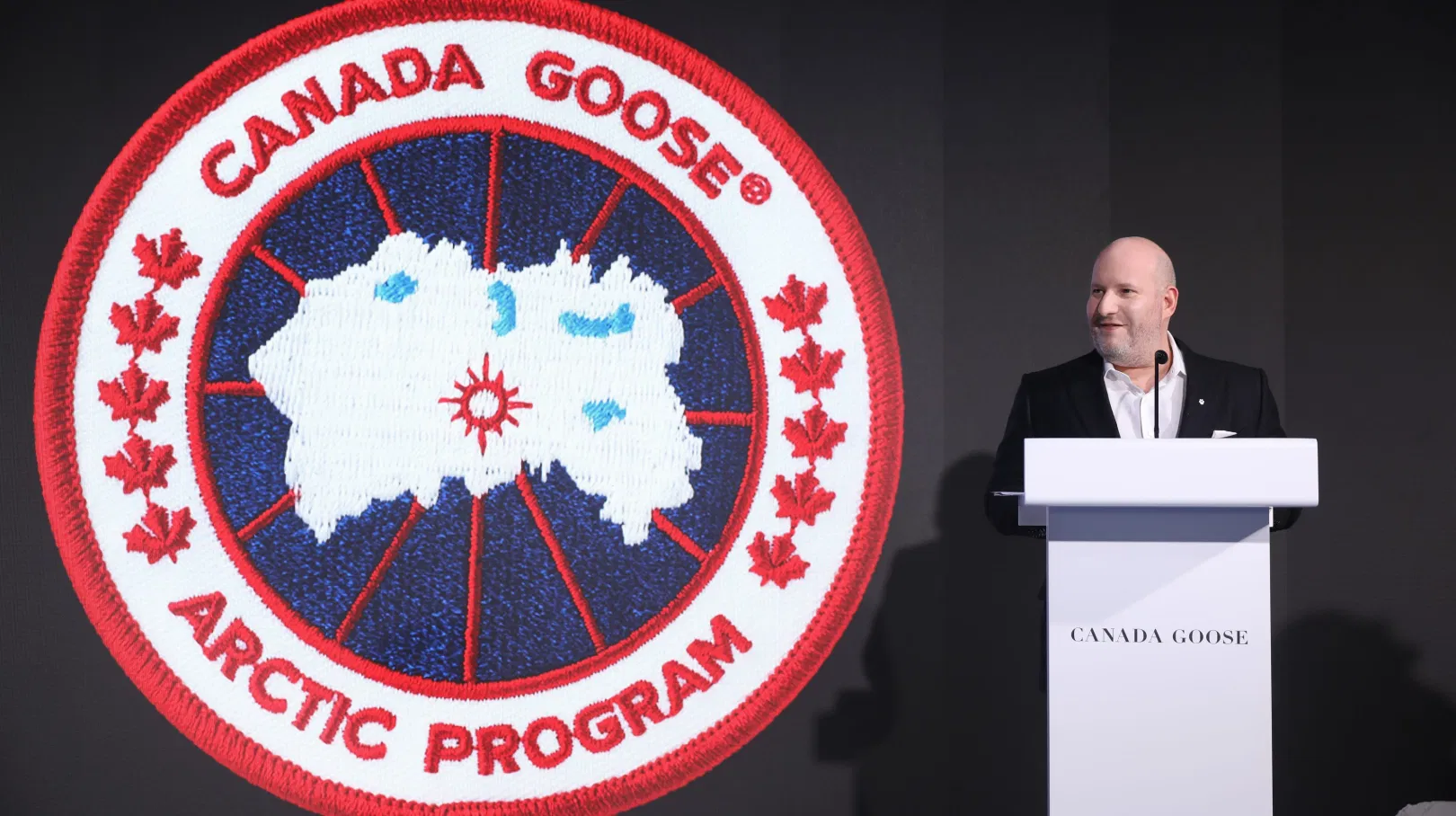When he was a boy, Dani Reiss had such a distaste for logos that he used to cut the alligators off his Lacoste shirts. The irony in there is not hard to find.
As president and CEO of Canada Goose, Reiss, of course, now presides over one of the most prominent brand emblems in the entire outerwear business—the family company, then with a few million in revenue, that he took over in 2001 and has shepherded close to $1 billion in annual sales since.
From his cottage in northern Ontario, Canada, Reiss discusses why, at a time when every company seems to be rushing to sell direct to consumer, the value he still sees in wholesale, why Canada Goose’s future is omnichannel, and how he once asked his own father to step down as CEO.
“Coming in, having gotten my degree in English literature and not in business, I made different kinds of choices,” he says. “I think that if somebody had come into this company and just applied Business 101, I don't think we would be here today.”
(This interview has been edited and condensed for clarity.)
Let's begin with something of a state of the union for your company. What was the most difficult part of 2020 for Canada Goose?
Reiss: One thing that has been very different about 2020, as opposed to any other year, is that things that used to be leading indicators, things that used to give me a sense of what's going to happen in the future, just aren't there anymore. 2020 has been a year where we're basically navigating in the fog. And the way around that challenge is to very actively manage the business and to be looking at it at a much more micro level, on a much more frequent basis than we have in the past.
One of the fortunate things for us this year is that when the impact of the pandemic first hit, it was during our smallest quarter and in the softest period of our business, historically. We knew that would be a bad quarter or a hard quarter, but we got to learn how to try and navigate this year [during] a quarter that was far less material than future quarters. And I think that was a little stroke of good luck for us and has helped us along the way.

Your company, which has long sold through department stores and through other retailers, has sold direct to consumer online since about 2014, before your first stores came in 2016. And while you're by no means abandoning retail, at least in the short term, Canada Goose has signaled a slowing in its plans to open new stores.
Do you imagine your stores will remain true profit centers for the business, or might we see them transform more often into showcases for your product—a place where shoppers can interact with Canada Goose items, but the transactions themselves actually happen online or elsewhere off the showroom floor?
Reiss: My vision for the future of how we transact with our consumers and our fans is that we want to meet them wherever, whenever, and however they want to shop with us. And that may be in our physical environment where we continue to see, even in times like this, strength in our actual bricks and mortar environments across the globe. China, in particular, is a strong market for us, and we've invested a lot there, as well.
Because we have so few stores today, relatively, and because our mandate is only to open the best and most important stores in the most important places and most iconic places in the world, I think that a hybrid and the full omnichannel experience where anybody, anywhere in the world, can interact with us at any time of day on their terms and get the exact experience that they want—that's the vision for the future.
Your direct-to-consumer business is really coming on. As recently as 2016, ecommerce and retail accounted for only 11% of Canada Goose's revenue, and those categories now account for somewhere in the ballpark of half your business today. What's the percentage of direct sales versus wholesale that you think is about the ideal number for where your company would be healthiest?
Reiss: You know, it's hard to pick an exact number. There is no question that we can continue to grow in direct to consumer (DTC) and ultimately have it be a larger percentage of our overall revenue than it is today.
At the same time, I know that there's a lot of opportunity for wholesale to continue to grow. And there is a role for wholesale to play, in that [it] exists in a physical space in places where we will never open stores. So it allows us to be introduced to new consumers around the world in a different kind of way.
I think that our direct-to-consumer business will continue to grow and accelerate, as it has been doing, at a faster rate than wholesale is going to. And that will hopefully result in us having a higher percentage of DTC than we do today overall.
Let's go back to 2001, the year you succeeded your father, David, as CEO of the company. Now, you have always said that you once had no interest in the family business, that you never wanted people to think you got a job just because your dad gave it to you.

But the great part to the story is that not only did you take over as CEO from your father, you actually asked him to step aside because of the vision you had for the business and that you needed to officially take the reins to bring it to life. What kind of arched eyebrows did the boss's son, who held a degree in English literature, get for being that bold then at just 27 years old?
Reiss: Well, first of all, my dad deserves a lot of credit for letting me try out the things that we tried out, which ultimately were successful. At the time, I never thought I'd end up doing this with my life. That was 23 years ago, and here we are.
The story of the last 20-plus years is a story of turning a brand into a true global consumer brand that now holds its rightful place in some of the greatest urban centers in the world. That's a transformation that I couldn't have predicted 20 years ago.
It was a step-by-step process. The way we got here, in hindsight, is by doing things that are unconventional. At the time, we made choices such as staying made in Canada. We knew that by staying made in Canada, our products would have to be more expensive. In making that choice, we were able to help create a category of luxury outerwear, which did not exist to the extent it exists today.
Today, [luxury outerwear] is a massive global category, and it's only growing. We did that by making unconventional decisions. When you make unconventional decisions, and you're successful in making those unconventional decisions, you become a leader in that category.
When you took over in 2001, Canada Goose's revenue was $2 million per year. Your most recent fiscal year was slightly higher than that, you might say, at $958.1 million.
What if I'm part of a company that's in a position like Canada Goose was not all that long ago? I've been in business for some time, and I'm doing well on the whole, but I feel that there is another stratosphere I could be operating in. From what you've learned in the rise of Canada Goose, what advice might you give a brand that needs a similar shot in the arm to reach its full potential?
Reiss: My experience was that [Canada Goose] needed a different lens and an external point of view, which apparently I had. I didn't realize I had it at the time. Coming in, having gotten my degree in English literature and not in business, I made different kinds of choices. I think that if somebody had come into this company and just applied Business 101, I don't think we would be here today.

If you were to find yourself in that situation, look at the business and reframe it differently. For me, it just was the natural, organic thing to do because I wasn't in the business before. I came into it and I saw some things that I thought would be cool to try out and they worked. Someone once said to me, "A great way to look at your business is to fire yourself and then rehire yourself five minutes later, and then look at the business again as if you're just starting from scratch. In that, see what could be done differently."
It's really about changing the paradigm. And our paradigm at the time was that we were a private label manufacturer, mainly manufacturing jackets for other brands. We had this product called Snow Goose then—it's called Canada Goose now—and it was a cult product in the coldest places on earth. Looking at that, and making the decision ultimately to go away from private label manufacturing to control our own destiny, to take the risk of abandoning that business and really leaning into our own products, is actually how I learned about what a brand really is.
I wanted to ask you a question about the public perception of Canada Goose. On the one end of the dial, you have a group of customers who agree Canada Goose is simply the pinnacle of outerwear. The products do not come cheap, but they are so well made and so well styled that owning a parka and wearing it proudly brings with it an aura of luxury and exclusivity that is really something to aspire to.
But you are also smart enough and self-aware enough that you know there is this whole other segment of people who view Canada Goose in an altogether different light. They disagree with how the company uses animal products in its clothes, and not only will they not become customers, but they're going to loudly object to the brand and the way it does business. From where you sit as president and chief executive, how do you interpret those two realities about how people see Canada goose?
Reiss: I think that it does come back to authenticity. We make a best-in-class product. We're a function-first product. Fur is the only product that works in extreme cold environments. If you're going to be a large company, if you're going to have a large presence of any kind, you're always going to have people who are detractors. We don't focus on that. We focus on doing the right thing.
My personal view is that a business has to be good for the world, and has to be good for the communities in which it operates. And aside from obviously sourcing all of our raw materials in a very sustainable and ethical fashion, and on top of offering all sorts of variety in many of our styles— in fact, over half of our styles don't contain fur—we're really committed to [being] a leader in environmental change.
One of the things that has changed over the last number of years is that people have lost faith in governments to be able to make these sorts of changes, because there's too much bureaucracy tied up in that. I think that corporations are able to be more nimble and pivot more quickly.
We recently introduced our first ever sustainable impact strategy, which outlines a number of very bold initiatives to help contribute to that. Ultimately, we want to be a leader in helping to transform the apparel industry from an industry that is considered a highly-polluting industry into a very sustainable industry.


